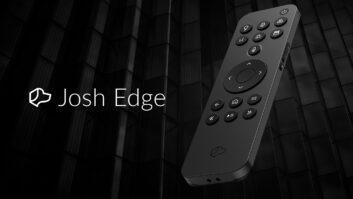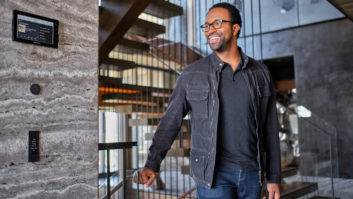
“Turn on the kitchen lights.”
“Turn on the lights in the kitchen and living room.”
“Turn on the second-floor lights and play Frank Sinatra in the kitchen.”
“Play ‘Like a Rolling Stone’ by Bob Dylan on Spotify.”
“Show me the cameras and set the bathroom to 72 degrees, play classical music, and dim the lights 50 percent.”
That’s not how you should be talking to your wife, but it’s how you’ll interact with Josh, a home automation system that will be available in the summer from start-up J Star.
Josh is a $10,000 system incorporating a voice OS and artificial intelligence to control home systems with natural-language voice commands, said JStar CEO and co-founder Alex Capecelatro. The former research scientist for NASA, the Naval Research Lab, and Sandia National Lab teamed with CTO Tim Gill, Quark’s founder and former chairman, to start the company. Gill developed the Josh.ai programming language used by the system.
JStar plans to ship Josh direct to consumers but will also refer consumers to systems integrators for integration with custom-installed home-automation systems. The company will ship only 100 units this year to focus on quality and service, Capecelatro said.
See Josh run: Josh runs on a preconfigured Home Base server, which plugs into a home’s Wi-Fi router and finds smart-home products in the house. Home Base features natural-language processing that takes place locally and in the cloud.
Home Base will control Z-Wave, ZigBee and Wi- Fi devices from Nest, Lifx, Philips Hue, Lutron, Nest, Smart Things, Belkin, Chamberlain and Sonos. The company plans to integrate with a lot more devices.
Josh will come with a hands-free system running on an iPad Air 2 to deliver far-field voice control, which like Amazon’s Alexa personal digital assistant hears commands from across a room. Consumers can also speak commands into most Android and iOS phones and tablets running the Josh app, which will also enable touchscreen setup and control of home systems.
Voice’s place: Although Josh promises to respond to voice, Capecelatro called voice “an important but not exclusive component” of a high-end smart home-control system. Voice, he noted, is “ideal for complex commands.” If a light switch is nearby, he explained, “it’s probably easier to tap it than interact with an app or voice control system.” On the other hand, “if you want to turn off the entire house, or just upstairs, or to set the lights to a dinner party mood while turning on Frank Sinatra and opening the shades, voice makes it easy and fast.”
The future of home automation “is all about making the experience natural and intuitive,” he said.







